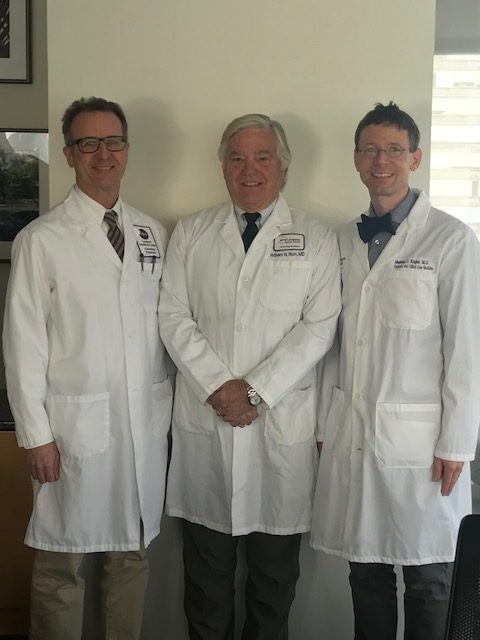NYUSOM: Drs. Kugler, Rom and Munger
Current treatment of idiopathic pulmonary fibrosis (IPF) does not prolong survival. Development of new therapeutic approaches requires improved understanding of the pathogenesis of IPF. We have learned that ‘hedgehog’ (HH) signaling is required for lung development and may be highly relevant to IPF. The clinically-approved HH pathway antagonists Vismodegib and Erismodegib offer the possibility of rapid bench-to-bedside delivery of targeted therapy.
Our project involves dissecting how HH signaling regulates lung fibroblasts during postnatal development and testing this mechanism in adult lung fibrosis. We hypothesize that (1) during postnatal lung development, the decline over time of HH signaling in lung fibroblasts decreases their abundance at the end of alveolar growth, thereby allowing maturation of the alveolar wall, and that (2) during adult lung fibrosis, the failure to reduce HH signaling in lung fibroblasts of fibrotic scars results in their persistence, thereby preventing fibrosis resolution.
In postnatal lung, we established HH as a new alveolarization-promoting factor. In adult lung, we reported the presence of HH signaling and showed increased HH signaling involving myofibroblasts in experimental lung fibrosis. In mechanistic experiments, we revealed that HH inhibition does not decrease fibrosis but HH overexpression or loss of negative pathway feedback increases fibrosis. For the future, we plan to advance studies of HH signaling in experimental lung fibrosis, focusing on (1) non-canonical HH signaling and (2) the role of pathway crosstalk with other pro-fibrotic pathways. We will compare gene expression signatures affected by HH signals with cells from bleomycin-injured lungs and from human IPF lungs (using a single cell RNA approach) to identify cell populations that can potentially be targeted by HH inhibitors. Our long-term goals are to better understand the molecular signatures of pulmonary fibrosis by studying their characteristics in pathophysiologically relevant mouse models to elucidate novel mechanisms and improve treatment options
